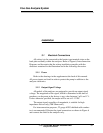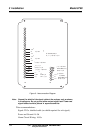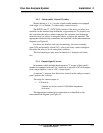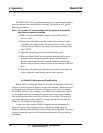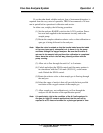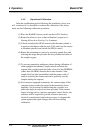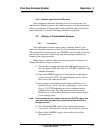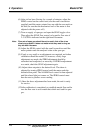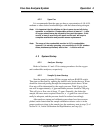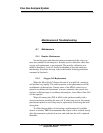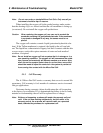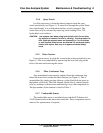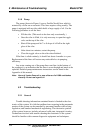
4-5
Flue Gas Analysis System Operation 4
TELEDYNE BROWN ENGINEERING
Analytical Instruments
4.1.6 Routine Operational Calibration
Span calibration should be checked every two to four weeks on a
routine basis. Whenever there is the slightest suspicion of abnormal perfor-
mance, an inspection of the possible trouble should be made, followed by
span calibration. Use trouble shooting procedures as required.
4.2 Startup of Combustibles Analyzer
4.2.1 Procedure
The combustibles monitor comes ready to operate. Power is con-
nected to it through a terminal strip in the oxygen analyzer (see Figure 6).
The combustibles monitor has Its own POWER switch located on the front
panel of the control unit. Alarm relay and analog output terminals are
located in the oxygen analyzer.
When ready to operate, follow the startup procedure in Section 4.3
Startup Procedures, except as follows:
(1) Turn on the air supply and adjust the AIR regulating valve on
the valve panel until I flow rate of 2–3 SCFH is indicated on the
lefthand flowmeter.
(2) Open the SAMPLE toggle valve and open the sample/bypass
control valve fully CCW. The sample/bypass control valve is
the valve on the outlet of the filter.
(3) Start up the svstem pump and with either calibration air or
sample flowing, slowly close the sample/bypass valve until a
flow of 2–3 SCFH (matching air flow) is indicated on the
righthand flowmeter. The flowmeter ball will have some
bounce due to water column fluctuation in the system. Adjust
for an average value.
Note: Do not attempt to run a higher flow rate than 3 SCFH. Higher flow
rates will cause the water trap to break and all flow will be lost
through the drain.
(4) Turn ON the POWER switch of the combustible monitor
control unit. Wait about five minutes for the unit to warm up.
(5) Shut off the SAMPLE toggle valve and let only air flow
through the unit.



